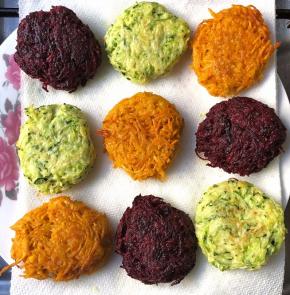I'll start with an apology – since October 7th, I haven't been able to get back to myself, and I've neglected this newsletter. But the wheat is growing again, and we aren't going anywhere.
This time, in an unusual twist, I will review a fruit that you won't find in this week's box. It was supposed to be in the box, and we expect it will return soon, but not this week. Thanks for your understanding.
Before I tell you about the Maggie tomato, I'd like to talk a bit about the communities in the northern Negev and the Gaza border area, as we see it from our perspective, as we are associated with the agriculture as well as with the farmers.
If there's an area in Israel that could be called “The Israeli Breadbasket”, the first would be the northern Negev, especially the fertile land around the Gaza border. In this case, “The Bread” is a euphemism for agriculture in general, a lot of agriculture.
All the communities in the Gaza perimeter, Kibbutzim and Moshavim, are organized and focus significantly on agriculture. Even today when Kibbutzim and Moshavim are privately-owned, apropriately for the 21st century. Agriculture is also the reason that they were founded 80, 70, and 60 years ago, and many farmers sacrificed their lives for the land they loved and cultivated.
In Kibbutz Nir Oz, the mythical manager of the potato crops, David (Sa'id) Moshe, was murdered. A well known farmer in the field. The potato cartons from Nir Oz have his figure drawn on them and his name precedes him, even during his lifetime.

Zalman, short for Aryeh Zalmanovitch, a legendary figure of the Falha in Nir Oz, who, even in the ninth decade of his life, insisted on going to work in the fields every day to battle the rose-ringed parakeet that covet the kibbutz's peanuts and sunflower seeds, was kidnapped to Gaza.
In the Gaza-adjacent communities there is a lot of conventional agriculture, but in the region, there are also many organic farms that we have been working with for many years. Fortunately, as far as we know, the farmers we work with are safe and healthy, but the war has harmed them in many other ways: damage to greenhouses and facilities, employees fleeing, and in some cases, a forced evacuation of the farm.
This is why we don't have Marcelo Targeman's wonderful organic bananas from Moshav Sde Avraham in the Eshkol region and we miss Avi Habiavian's organic fresh produce from Organika farm in Moshav Hodayah.
This brings us to the Maggie Tomato (no connection to our name). In the past, I've already reviewed tomatoes and how quickly they were acclimated in the Old World after the Spaniards brought this fruit from South America.
We, in our region, have been growing and consuming tomatoes for over four centuries, allowing me to avoid reviewing this chapter and the previous chapter about the tomato in the Aztec menu, where they combined it with chili and human flesh.
Quite a few excellent tomato varieties have been developed in Israel. You're probably familiar with the (not entirely accurate) legend about Israel and Cherry Tomatoes. But alongside the somewhat impeachable crown, truly wonderful varieties have been developed, such as the Tamar (of which we have only a very small amount this week) and the Maggie Tomato, which burst into our lives a decade ago as a joint development of the Faculty of Agriculture in Rehovot and the Hazera company. In my opinion, this is truly the perfect tomato.
To begin with, the size is perfect. It is not small as a Cherry Tomato, but it usually comes in a medium size, which I find to be the best for practical use (even for snacking on a raw tomato right after it's been picked). Add to that the striking, vibrant red color, and its texture that is exactly what you'd want in a tomato. And the taste – the taste of a Maggie Tomato is unparalleled.
You’ll have to excuse me as I’m eager for a Maggie tomato, and this week I will have to wait patiently.








